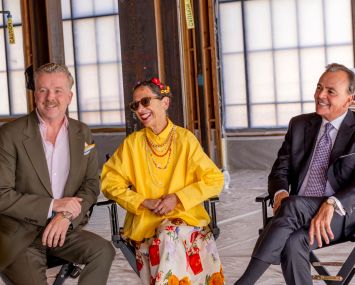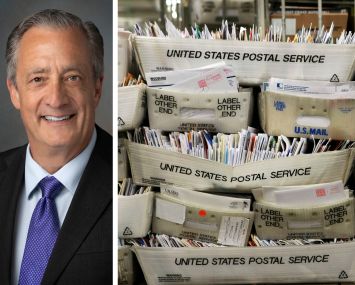WeWork CEO John Santora On Expansion Plans, Those Amazon Deals and More
‘The one thing I'd like to see us do is to find that quasi-trophy asset in New York.’
By Mark Hallum February 24, 2025 12:00 pm
reprints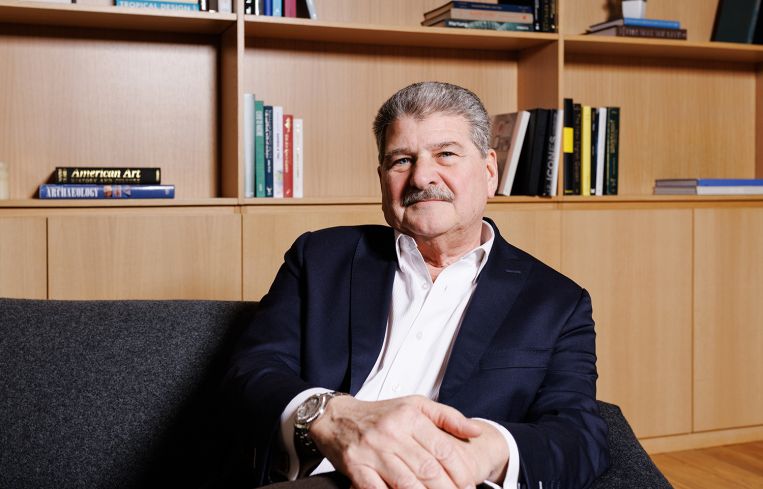
John Santora is bringing a little bit of old-school savvy to WeWork, whipping the formerly bankrupt, publicly traded company into a private business on more solid footing.
The honorary New York City firefighter spent 47 years at Cushman & Wakefield before becoming WeWork’s first full-time post-bankruptcy chief executive officer in June 2024. Given his experience, Santora knows more than enough to have begun mixing traditional office leasing sense with the newfangled ideas that fueled the early WeWork.
Santora sat down with Commercial Observer on Feb. 13, talking about the ways he has guided the company driven to the brink of destruction by its bombastic co-founder Adam Neumann, through COVID-19’s remote work fallout, to its current iteration servicing big names like Amazon. WeWork and Amazon in December partnered on a major lease at 330 West 34th Street, the pair’s second in New York City and third overall along with an office in Dallas.
The vibe within WeWork headquarters at 71 Fifth Avenue is a far cry from the culture at its former center of operations at Dock 72 depicted in the 2022 AppleTV series “WeCrashed.” The more traditional feel of WeWork’s office these days sends a message that the coworking firm seems to be maturing after wobbling out of bankruptcy in the summer of 2024.
This interview has been edited for length and clarity.
Commercial Observer: How did you end up being the CEO of WeWork?
John Santora: When Anant Yardi acquired the major position within WeWork, I called them on behalf of Cushman & Wakefield, and I said, “You just bought a real estate company. How can we help you?” We met, and we talked about how C&W could assist him in this process.
He called me a couple days later, and he said, “You really want to help?” And I said, “Yeah, I do.” He said, “Well, I’d love you to come in and be the CEO with the company and take it as we exit bankruptcy and go forward.” From there, I dug into who the clients are and all of that, and, having looked at the client list, I said, “These are clients I’ve dealt with and continue to deal with at C&W.” These include 47 of the Fortune 100. These are the types of firms I’ve always dealt with.
I realized the scale and the depth and breadth of the organization, and we figured out how to make it work.
So it more or less started with a cold call?
Warm call, yeah.
What were the first weeks like? What were some of the surprises?
I guess the surprises were, and continue to be, the level of talent here. You would think with all the bumps and bruises that people would have moved on, but the organization is solid from a talent perspective. And the people love this company — they’re really tied to the brand in many, many ways.
I think the other thing, though, was there needed to be a level of organization and a go-forward growth plan and profitability plan. Coming out of the restructuring and during the restructuring, every conversation has got an attorney in the room and a finance person in the room.
OK, we’ve exited. We’re an operating company. Let’s all make our decisions and move forward. Let’s react to the market, react to the needs of our members, and step away from that really structured, tough period of time.
What’s the vision for the future right now?
We have the traditional coworking component, which is the little entrepreneur with one to nine employees, the startup that wants to use our space and come in. And it’s not like the old days, where it’s a bunch of kids hanging around playing pingpong and drinking beer. You see they’re structured places. They’re warm and welcoming, but we’ve matured out of that, and coworking in general has matured out of that. But the one- to nine-employee firms are an important part of our day-to-day business.
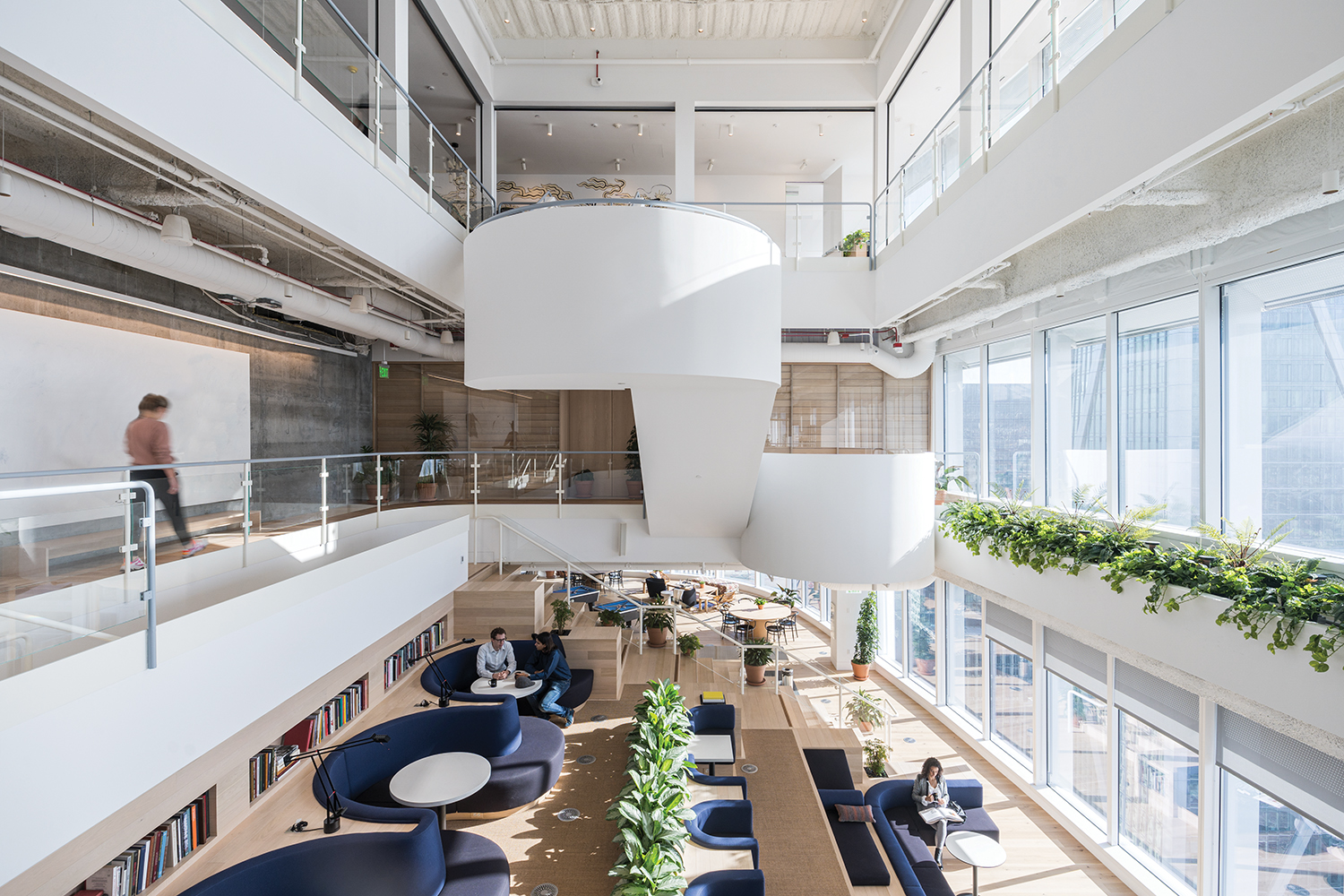
Then we have that small business — 10 to 50 people — and we’re perfect for that. That business doesn’t want to go through the process of taking a 10-year lease or a five-year lease, doing the construction, getting the architects and the brokers and all the resources you need.
So think about a small accounting firm or something like that, right? The principal, the president, CEO, whatever you want to call them, the owner. He or she would have to be engaged in that whole process and take a lot of time away from running their business, growing their business, making their business just work. Instead, bang, we provide all the services. The technology is here, the resources are here. The receptionist is here, even your coffee and all of that stuff is here. So it’s an easy way for people to move forward and to grow their business without having to put all the capital and the time and everything behind it. Is there a point in time where they move into a lease in their growth stage? Sure, we can handle it up to any level.
So you have those two aspects, and you have that big corporate enterprise client, like Amazon and with many others that need us to provide them with the flexibility, the growth options as they move into new markets, test new markets, or have special groups that are working on a special project to be able to deliver that quality of space that they want.
Growth is working with our landlords out there, helping them fill up that last 10 or 15 or 20 percent of their building, working with them with their amenity spaces.
Then we have some of our alliance partners, our affiliates, where we have clients that need to be in some of the smaller markets. They have clients that need to be in the bigger markets, being able to support each other in that. So those are some of the areas where the growth is going to happen.
The other pieces are all-access, which is that black card. For [$199 to $299] a month, you get access into our offices around the world. To me, it’s a great buy. You can come into some of the greatest buildings in the world for $300, $400 a month.
How did the Amazon partnership come about? And what are you guys doing to accommodate them?
Amazon has been a major client of WeWork for many years, and they’ve reached out to us to help them in certain markets to take down some space. And, as you know, we’ve provided 304,000 square feet at 330 West 34th Street, we’ve now provided them with 112,000 square feet at 5 Manhattan West, 150,000 square feet in Dallas. We’re helping them in other markets, as needed, around the world.
It came about because we know their needs, and we could fill them quickly. So the way we structure it is we have a contract with them. We go out and negotiate the lease. We can get it done quicker. We can get the buildout done. And most of what we’re taking down is not raw space. You can’t get people into raw space in 45 days. You have to get space that’s already built, get the teams in there, make the modifications, and move forward.
In a way, it sounds almost like WeWork is acting as a brokerage.
We’re working with brokers in all of those cases we just named, but it’s the ability to be totally focused on them and to be able to take down the lease. If you think of my former firm and the other big firms, they’re not going to sign the lease. We’re actually signing the lease, so that’s very different.
What do WeWork’s expansion plans look like?
So, for the first time in the history of the company, there’s leases that are expiring. We’re also seeing that there are a few opportunities where we need to be in a certain market, or we need to be in a trophy asset in the market, or at a transportation hub, and we’re not there, and we’ll take down those leases if need be.
Everybody says that there’s so much risk in the lease scenario, but we need to be able to deliver the right product. We have 125 or so management and revenue-
share agreements. Those are our risk-averse types of deals, but your upside is not nearly as great. You limit your downside, that’s for sure. And a lot of times, when you’re going into these management agreements or rev shares, it’s not the best building in town, it’s not the place where you want to be. The landlord wants to do that because he can’t fill up his building.
So, I think we know this market. We know New York. It’s the best buildings that are getting filled up pretty quickly.
What kind of neighborhoods are you guys in right now in New York, and what are some of your strongest markets?
We have stuff on 59th Street, 58th Street and Lexington Avenue. We’ve got a couple along Lex in Midtown. We’ve got a bunch on Broadway. We certainly have this area covered. We have downtown covered. We have an opportunity downtown because 222 Broadway is going residential. We have a big footprint there, so we’re looking to replace that. So we’ll be moving out as we find the new location.
The one thing I’d like to see us do is to find that quasi-trophy asset in New York. Now, it’s not the top of the top, right? But something that’s really nice in the right market — maybe near Grand Central, that type of thing. Because I think we’re missing that in this city. We have some really great locations, but, you know, we could use one more, right?
And what kind of footprint do you guys have right now in New York?
Excluding the two deals with Amazon, it’s about 2.5 to 3 million square feet. And I think 30 locations.
Do you think there’s opportunities in coworking with office-to-residential conversions? Because 80 Pine Street is undergoing a conversion, and there has been at least some displacement.
Any movement, any displacement, is an opportunity for us because we can fill it quickly — get you in, keep you working, and we can take care of you in the long term. But our whole model is to be flexible, so we’ll give any term regardless of size. Could be 250,000 or 350,000 feet, or it could be two desks.
Are there any opportunities out there with what’s going on with the federal government reducing space and laying off staff?
We’re trying to figure out where we can fit in there. I think what has to happen is, if we’re gonna cut down on the federal workforce — which is where they’re going to shut down major divisions or even entire departments — they’re going to have to rework the space to some degree. They’ll have way too much space hitting the market.
So I think there’s a short-term opportunity for us, and I do think there may be a longer-term one if they sell some assets and look for space during that in-between period. Any type of change like that gives us an opportunity to grow our business, and it’s a growing business.
London’s the largest flex-working market in the world, and New York is probably not far behind it when you look at the stats — it’s clearly growing. We have almost a third of the space around the world. Stats will tell you that it is going to go to 500 million to 1 billion square feet. Whether it does or it doesn’t, we will be part of that growth, that’s for sure.
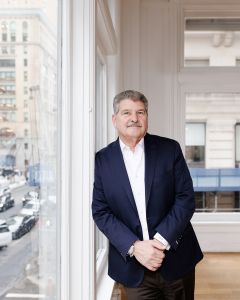
There’s been a number of surveys where CEOs and heads of real estate have been asked if flex working is part of their overall real estate plan? Eighty percent of them say yes. They’ve been sitting on big leases that they signed for the long term. You get a downturn in the market, and they’re stuck with it. They got to sublease it. They can’t sublease it, so they write it off. Always having a little component of coworking — it doesn’t have to be much — gives them flexibility. Gives them the opportunity to lower their spend when they need to, and then increase it if their business takes off.
What makes London different from other markets?
I don’t know. It opened up its arms to flex working long before everybody else did, and in a bigger way. It may have something to do with the fact that leases in London used to be 30-year leases. I think that when people saw the ability to have part of their space not as a 30-year lease but a lot shorter term, that may have been what created it.
What are some of the bigger tenants you’re working with right now?
We have 220 AI firms in our spaces and we work with 4,000 enterprise clients, but those 220 go from the biggest in the world all the way down to two or three people and everybody in between. C3.ai is a client of ours. OpenAI is in some of our space. Lots of technology companies. Salesforce is a great partner that provides us technology. We provide them some space.
What do you think the future of AI in the office market is going to be?
I think a lot of those small companies are going to get bought up, acquired, or go away. And I think, like any other technology business, there will be six, seven giants around the world. And then there’ll be the smaller ones that feed them and provide resources to them.
What is WeWork trying to avoid right now considering the company’s history?
We are very disciplined and structured in our spending and where we will look to grow. We’re putting an enormous amount of capital into our spaces, because during that tough period, you didn’t have the money to upgrade and repaint, lay new carpets and all that. So we’re doing a lot of that work around the world.
We’re balancing out that spending and expansion with the discipline of getting the financials in the right place. We had a break-even, from an EBITDA [earnings before interest, taxes, depreciation and amortization] perspective, for the last quarter, which is the first time in the history of the company, and $2.2 billion in revenue.
We’re going to be profitable soon. But, you know, look, when you’re at a break-even from an EBITDA perspective, that’s because you’re spending a lot of money and making that capital investment back in your spaces. We need to at this point. We’re being very disciplined. Historically, the company hasn’t been very disciplined.
I think they took lots of space with the anticipation of clients coming in. We have plenty of space, we’re in the right markets, and we will work with those enterprise clients to get the space to match them, as opposed to sitting there with a whole bunch of vacant space waiting for them to come.
How do you identify the best markets for coworking?
It’s those markets where the return to office is truly happening, and it’s also the markets where people don’t have huge apartments and houses and they don’t have an office in their apartment. So two people are in the apartment. They’re both trying to decide who’s sitting in the bedroom, who’s sitting at the kitchen table and all that. So we saw in those markets quicker return to the office than we did in other markets where people have a bigger house.
Our occupancy level in New York is around 85 percent, which is a great number for us. Any time when you get past the mid-70s, that’s a really significantly profitable margin for us, and we’re seeing it.
Tell me about your Latin America plans.
We have 100 percent of our Latin American markets now. I thought it was important to retain those markets, so we bought our partners there, and we’ll have 100 percent of the Brazilian operation as well.
What’s the demand like in those countries?
We have two distinct operations in those markets. You have the local companies and individuals that want to be there, and then you have the multinational firms that need to be in those markets, but they’re not ready to take down anything long term because they don’t know what their growth pattern is going to be there.
You know, the first 30 people they send in there are — it’s “Is 30 going to become 200 or is 30 going to stay 30 for the next two years?” So they look to us to provide them with the resources.
I look at it from a Cushman & Wakefield standpoint: If we can provide you great service in the tough markets, then you’re going to welcome us to be with you as your partner in the easier markets, right?
I think it’s an exciting time for us, people are energized. We have no debt, we have capital on hand.
Mark Hallum can be reached at mhallum@commercialobserver.com.
